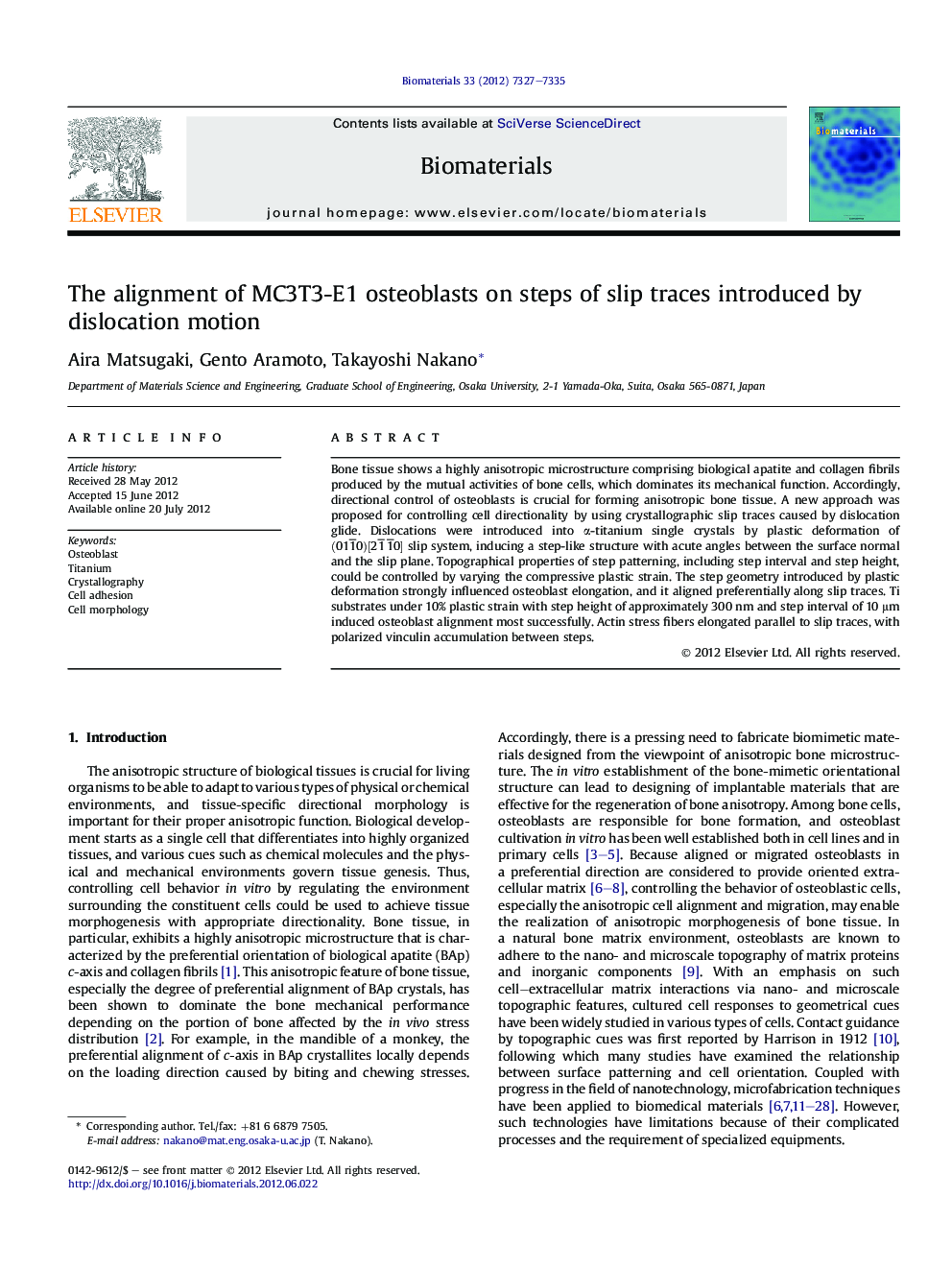| Article ID | Journal | Published Year | Pages | File Type |
|---|---|---|---|---|
| 6639 | Biomaterials | 2012 | 9 Pages |
Bone tissue shows a highly anisotropic microstructure comprising biological apatite and collagen fibrils produced by the mutual activities of bone cells, which dominates its mechanical function. Accordingly, directional control of osteoblasts is crucial for forming anisotropic bone tissue. A new approach was proposed for controlling cell directionality by using crystallographic slip traces caused by dislocation glide. Dislocations were introduced into α-titanium single crystals by plastic deformation of (011¯0)[21¯1¯0] slip system, inducing a step-like structure with acute angles between the surface normal and the slip plane. Topographical properties of step patterning, including step interval and step height, could be controlled by varying the compressive plastic strain. The step geometry introduced by plastic deformation strongly influenced osteoblast elongation, and it aligned preferentially along slip traces. Ti substrates under 10% plastic strain with step height of approximately 300 nm and step interval of 10 μm induced osteoblast alignment most successfully. Actin stress fibers elongated parallel to slip traces, with polarized vinculin accumulation between steps.
